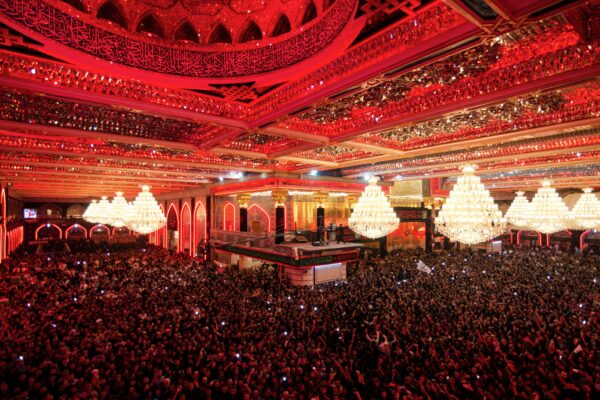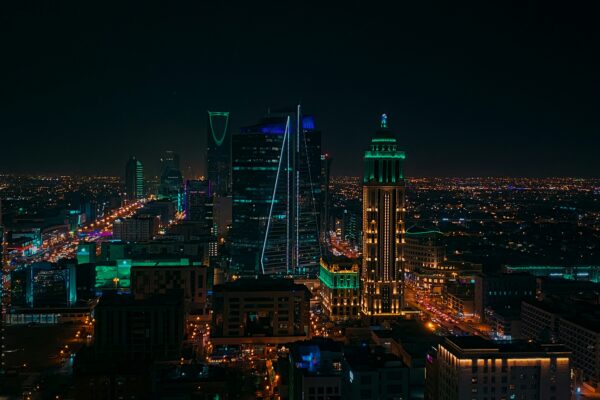Seven years and $265 billion dollars – yet it looks like Saudi Arabia is on the brink of losing the war in Yemen. From day one, it was a tall order for the Saudis to restore order in Yemen, and ever since the commencement of operation Decisive Storm, the Saudis have faced constant setbacks.
Seven years and $265 billion dollars – yet it looks like Saudi Arabia is on the brink of losing the war in Yemen. From day one, it was a tall order for the Saudis to restore order in Yemen, and ever since the commencement of operation Decisive Storm, the Saudis have faced constant setbacks.
For almost seven years now since 2014, there has been a civil war raging in Yemen which has led to the death of 230,000 Yemenis and the largest humanitarian crisis in the world – with 20 million in need of humanitarian assistance as a result of Saudi-led blockades on Yemen.
The situation in Yemen is hugely complicated, with conflict and tension spanning way before the civil war. However, with the emergence of Oman’s direct talks between the Houthi rebels and Saudi Arabia as well as President Biden’s inauguration, it may finally look like the cycle of conflict in Yemen can be ended.
The Groups
The conflict in Yemen can be characterised by the very complicated background of each group/country involved and here are the main groups to be aware of:
The Houthi rebels
The Houthi rebels are part of the Zaidi Shia group, a minority sect within Shi’ism. They emerged during the premiership of the corrupt Ali Abdullah Saleh who misled Yemen for 33 years.
The Houthis take inspiration from Hezbollah, the group in Lebanon who stopped the Israeli invasion in 2000 and are assumed to be receiving aid from Iran despite Iran’s spending on the war of a few million dollars a month being nowhere near the $6 billion spent by Riyadh.
Yemeni government
Following the Arab spring in 2011, the new government of Yemen was formed with the Saudi-backed Abdrabbuh Mansur Hadi as president.
Hadi and the government are largely unpopular amongst both the Houthis and the Southern transitional council as he was the sole candidate in the 2012 presidential election.
Saudi Arabia and its allies
Saudi Arabia, seen as the face of the Muslim world, also has a huge part to play in the conflict.
Led by their fear of Iran and relationship with the United States and Israel, Saudi Arabia has always been a controversial state in the Muslim world, and their decision to back President Hadi through operation Decisive Storm as well as blockades to Houthi controlled areas in Yemen led to the escalation of the conflict and the largest humanitarian crisis in the world
Southern Transitional Council and the UAE
Formed in April 2017, the secessionist STC has had relative success in gaining a foothold in Southern Yemen controlling the regional capital of Aden.
Once fighting alongside Mansur Hadi, they switched when Hadi accused Aden’s governor, Aidarous al-Zubaidi, of disloyalty leading to the creation of the STC who declared its intentions to reinstate a Southern state.
The Beginnings of Conflict
After 33 years of rule, President Ali Abdullah Saleh – after facing 9 grueling months of protests – resigned transferring power to his Vice President Abdrabbuh Mansur Hadi. Hadi however was hugely unpopular as he was Saudi-backed, and ran as the sole candidate in the 2012 presidential election, an election which saw only a 60% turnout.
Hadi’s new constitution and decisions were met by protests by the Houthi rebels leading to the takeover of Yemen’s capital, Sanaa in September 2014 which was followed by the rapid takeover of the government. Backed ironically by former president Ali Abdullah Saleh, the Houthis were able to overthrow Hadi, forcing him to flee the country in March 2015.
Hadi also called on the UN Security Council to authorise “willing countries that wish to help Yemen to provide immediate support for the legitimate authority by all means and measures to protect Yemen and deter the Houthi aggression” as well as calling on the Arab League to intervene at the league’s summit on the 29th March 2015.
Escalation
In a joint statement, the GCC countries (excluding Oman) announced their intentions to intervene against the Houthi rebel group, marking the beginning of the escalation of the war and the introduction of more groups beginning to involve themselves.
All allies of Saudi Arabia (except Pakistan) put forward forces to fight in Yemen commencing Operation Decisive Storm. With the help of US intelligence, the Saudi-led coalition began their airstrikes campaign. Quite reminiscent of Operation Rolling Thunder, Saudi Arabia have dropped between 20,624 and 58,487 airstrikes since 2015 in Yemen with over a third of targets being on civilian objects such as schools, hospitals, and homes.
The Saudi-led coalition has received widespread criticism for its worsening effect on the humanitarian situation in Yemen. After declaring the province of Sa’ada, a city with a population of 50,000 civilians, a military target, the UN’s Humanitarian Coordinator for Yemen and Human Rights Watch expressed concern that the bombing there was unnecessarily harming civilians with the Human Rights Watch concluding that of the 59 killed in Sa’ada, 35 were children and 14 were women.
The Saudi coalition also was accused of using US-supplied cluster bombs by Human Rights Watch in May 2015 as well as being accused of using White Phosphorous by the Washington Post in September 2016, something not allowed to be used to attack humans as it burns human flesh down to the bone.
In Britain, shadow foreign secretary Emily Thornberry, in response to emerging reports that British forces were fighting alongside child soldiers, spoke in the British parliament suggesting that the British forces may have been witnesses to war crimes if the allegations were true. She claimed that as many as 40% of the soldiers in the Saudi coalition were children – which was backed up by Al-Jazeera’s reports that showed footage of the presence of child soldiers in the recruitment camps of the Saudi-UAE-led coalition with children from 15 to 16 were recruited from poverty-driven Yemeni villages.
On the other side, the Houthi rebels have been accused by the Human Rights Watch of using anti-personnel mines banned by law in 1997 which caused 497 civilian deaths in 2019 alone and the STC have been accused of committing violence against women including the rape of internally displaced women in Aden. In April 2017, the war escalated further in the South when the STC was formed.
Calling for the creation of the Southern state, the STC seized Aden in August 2019 and is now a government in waiting with its 26 members and governors from the five southern governances which it now controls. The STC, backed by the UAE, has been proactive in its fight against the Yemeni government, arresting key leaders of anti-Houthi fighters in Aden in July 2021.
Humanitarian Crisis
All groups involved have inexcusably sacrificed the lives of innocent Yemenis for their own goals leading to by far the worst cost of the Yemen conflict; the worst humanitarian crisis in the world.
As of January 2021, 80% of Yemen’s population is in dire need of aid with over 12 million children in need of urgent humanitarian assistance. Just for context in the UK, the population of children is 12.7 million; now try to imagine if every child in the UK is at risk of dying due to a lack of basic resources.
A de facto blockade by the Saudi led coalition started all of this with the closure of sea and land ports – including the closure of Sanaa international airport – caused, in a country that relies 90% on food imports, widespread famine in the Northern regions of Yemen as well as causing a cholera epidemic which has infected 500,000 people according to the World Health Organisation.
The Houthi rebels and the STC have also been accused of restricting humanitarian aid with multiple delays to humanitarian projects limiting the work of organisations on the ground. Although the Saudi led coalition promised to re-open ports in Hodeida in 2017, this never happened and the recent feud over a new peace deal, which did promise the reopening of Sanaa international airport but didn’t guarantee that blockades could be imposed again, is damaging more and more Yemeni lives by the day though a new peace deal involving Oman does seem to be progressing.
The Imminent Loss of the War
Seven years and $265 billion dollars – yet it looks like Saudi Arabia is on the brink of losing the war in Yemen. From day one, it was a tall order for the Saudis to restore order in Yemen, and ever since the commencement of operation Decisive Storm, the Saudis have faced constant setbacks.
First was Pakistan’s parliamentary rejection of war in Yemen; then came Qatar’s suspension from the coalition as a result of the diplomatic crisis from 2017-2021; following that was Morocco’s withdrawal in 2019 and the United Arab Emirates and Sudan in the same year; and finally, it was the United States of America who ended military support to the Saudi forces in Yemen following President Biden’s inauguration.
The Houthis now have control of most of the Northern provinces and are on the verge of taking control of the last government stronghold in Marib and the UAE-backed SLC has control of all four southern governances leaving the Yemeni government and Saudi Arabia with no influence.
The United States has also revoked the Houthis’s status as a terrorist organisation and President Biden appointed Tim Lenderking as Special US Envoy to Yemen who has since visited Riyadh to discuss peace plans. This, along with Oman’s talks with Riyadh and the Houthi rebels, has created a new hope of peace finally being achieved yet nothing is guaranteed.
A New Reality
If peace is finally agreed in Yemen, there could be a new look Yemen that will see secession once again between the Zaidi Shi’ite in the North led by the Houthis and the Sunnis in the South led by the UAE backed STC.
It’s highly unlikely that the unification of Yemen can be achieved with the sectionist aims of each group, as well as Saudi Arabia’s want to always be in control of the Middle East – but what could the return of North and South Yemen look like?
Whatever peace agreement is made we hope that inshallah the people of Yemen finally find peace after an entire generation has been scarred by a raging civil war.
References
Biden Moves to Revoke Terrorist Designation for Yemen’s Houthi Rebels
Saudi Arabia Eyes Exit Yemen: Saudi-Houthi Talks Alone Won’t Resolve Conflict
Saudi Arabia and Houthis: Ceasefire in Yemen
Saudi Arabia Proposes New Initiative
Yemen’s Southern Separatists Arrest Pro-Government Fighters
Yemen’s Southern Transitional Council: Delicate Balancing Act
Saudi Arabia Has Lost The War In Yemen
Oman Takes On Mediator Role In Yemen Conflict





